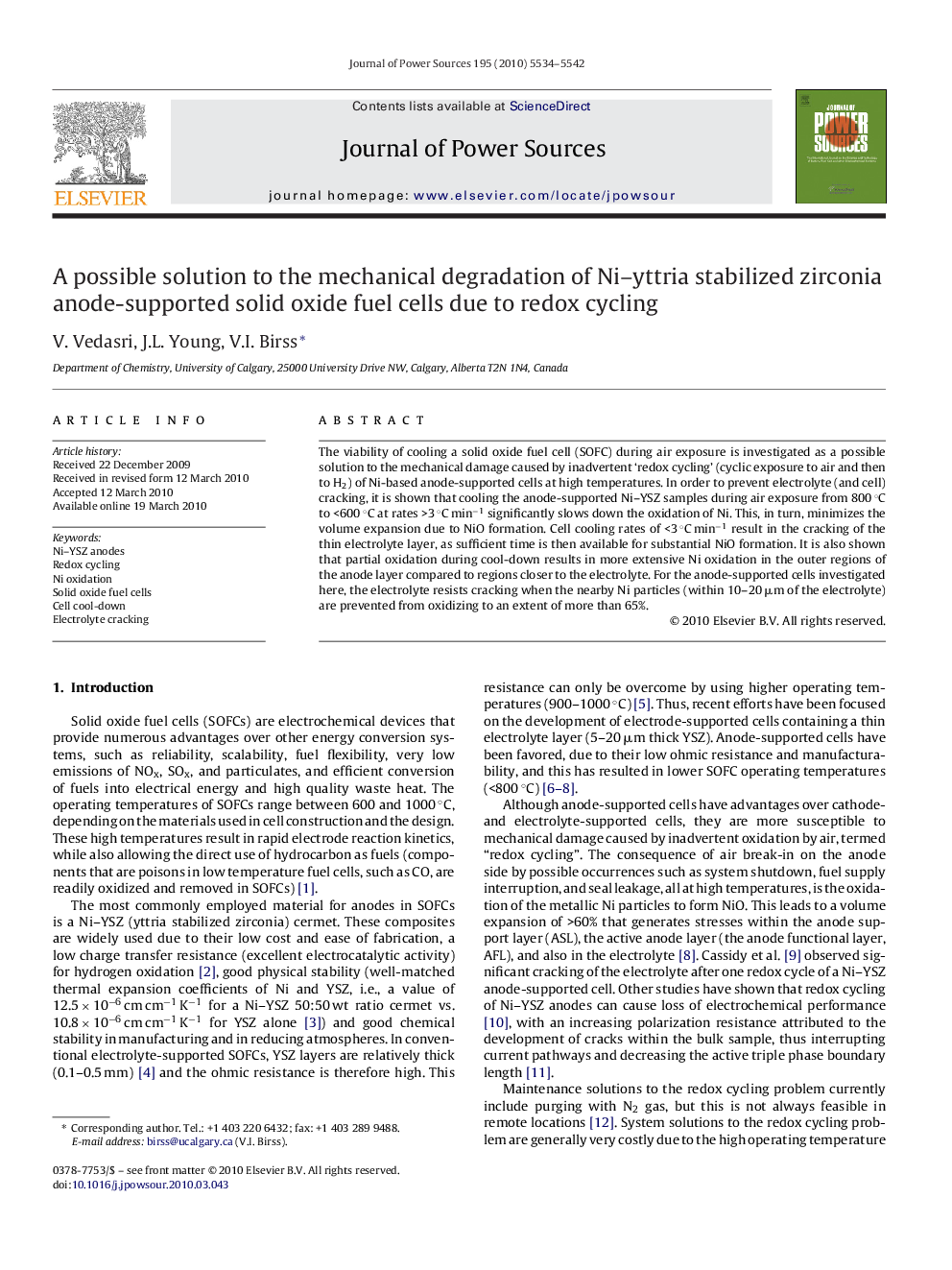| Article ID | Journal | Published Year | Pages | File Type |
|---|---|---|---|---|
| 1293716 | Journal of Power Sources | 2010 | 9 Pages |
The viability of cooling a solid oxide fuel cell (SOFC) during air exposure is investigated as a possible solution to the mechanical damage caused by inadvertent ‘redox cycling’ (cyclic exposure to air and then to H2) of Ni-based anode-supported cells at high temperatures. In order to prevent electrolyte (and cell) cracking, it is shown that cooling the anode-supported Ni–YSZ samples during air exposure from 800 °C to <600 °C at rates >3 °C min−1 significantly slows down the oxidation of Ni. This, in turn, minimizes the volume expansion due to NiO formation. Cell cooling rates of <3 °C min−1 result in the cracking of the thin electrolyte layer, as sufficient time is then available for substantial NiO formation. It is also shown that partial oxidation during cool-down results in more extensive Ni oxidation in the outer regions of the anode layer compared to regions closer to the electrolyte. For the anode-supported cells investigated here, the electrolyte resists cracking when the nearby Ni particles (within 10–20 μm of the electrolyte) are prevented from oxidizing to an extent of more than 65%.
